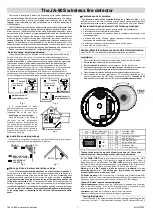
Figure 3.6: Preview of the array orientation based on user input.
The mounting height above the reference water level, and possibly a number of other
parameters, needs to be set for each specific mounting location. This can be done in the
configuration table that is shown in Fig. 3.7.
Figure 3.7: Setting sensor parameters (changes only take e
ff
ect after the system is rebooted).
Radar serial nr.
The first item in the table, the radar serial number, allows modification of which sensor
shall serve as sensor A, B or C.
Mounting height
The mounting height is defined as the height of a radar above the reference water level in
[m]. The reference point for measuring the height of each radar is the lower-side of the
radar mounting flange (as shown in Fig. 1.2). By default, the mounting height is set to
zero [m].
Tilt angle
The tilt angle, or the angular deviation from the vertical at which the radar is mounted, is
measured in degrees. For the point array, it is used to tilt radars B and C away from radar
A and obtain a favorable radar-footprint-triangle. In the triangle array, all 3 radars have
a tilt angle of 0 [deg]. While for the line array, only radar A will need to have a tilt angle
applied (as explained in Chapter 1).
21
















































